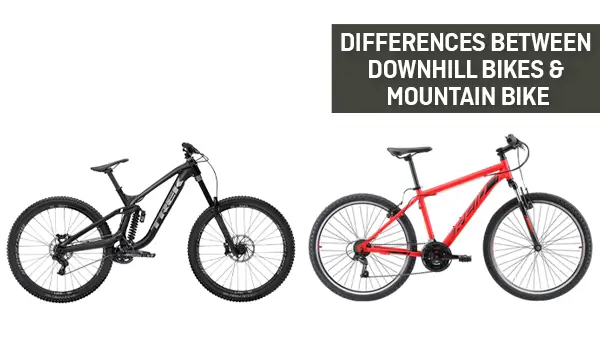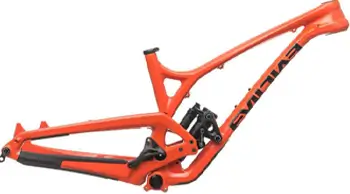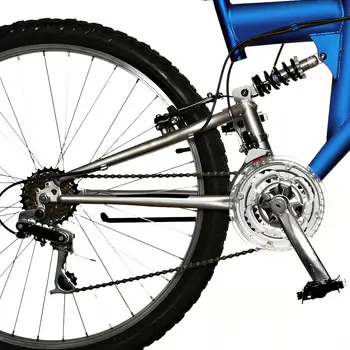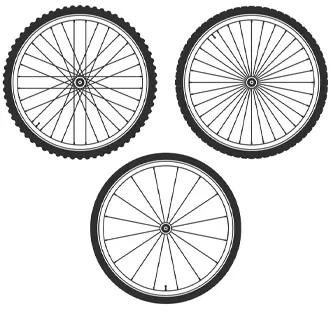Gone are the days when single bicycles were used for almost all types of terrains. Now, the times have changed. But, unfortunately, things have also changed with time. For example, now we have dedicated mountain bikes for women. These bikes have special frames, disc brakes, and large wheel sizes to help the riders ride them with ease.
As time passed, riders who wanted to ride bicycles on the toughest terrains wanted an even more special bike. They wanted a bike that was even more durable and powerful than the best mountain bikes for under $300. Therefore, the concept of downhill bikes or downhill mountain bikes came into existence.
Today, many people think that both these bikes are similar to each other. Though the similarities are there, these bikes are not identical either. Anyhow, it is essential to know the differences between these two. This article shares all the possible differences between downhill bikes and mountain bikes. So, let us get into it!
What Is A Downhill Bike?


You might have seen images floating over the where a ride is riding a mountain bike like hell. Actually, that’s a downhill bike. Basically, downhill bikes are those two-wheelers that are used for some extreme and tough off-roading. Usually, these bikes are meant for riding on steep tracks covered with rocks and mud. Off-road tracks for such bikes have very tough obstacles. The rider has to ride through these obstacles at a fast speed. Further, there are many risks involved here. So, it is recommended to use the best mountain bike accessories to ride with confidence.
So, in simple words, a downhill bike is a more robust, refined, and durable bike that is designed to help you outperform your peers on challenging tracks. These bikes have extra-long travel suspension on both ends, reliable disc brakes, and a robust frame that aids in a quality ride.
What Is The Mountain Bike?


A Mountain bike is one rough and tough bike designed for various types of terrains. Usually, they are used by riders who like to go uphill or climb on a mountain bike. These bikes also have a durable frame. However, lightweight materials like aluminum are mostly used for manufacturing these bikes. The purpose of these bikes is to offer an adventurous bike that isn’t very heavy and has the majority of robust features.
Mountain bikes also have a full suspension system, but that isn’t backed by a titanium or metal frame for added durability. Though, these bikes are also quite durable. You will be surprised to know that these bikes also come in the foldable option. Yes, there are many foldable mountain bikes. So, we can say that mountain bikes are good for trails, but they are ideal for all challenging and toughest terrains.
Differences between Downhill Bikes and Mountain Bikes?


Once you know what downhill and mountain biking are, it becomes easier for you to find the differences between them. So, let us now explore some of the common differences among these bikes.
1: Build and Frame


As mentioned, the frame of downhill bikes is made with durable and heavy-weight materials. Usually, it’s titanium or metal. These materials are no doubt heavy, but the end user also wants additional durability. So, the weight isn’t an issue for those who opt for these bikes. The geometry of these bikes is also designed to ensure maximum performance and durability.
Mountain bikes, on the other, have lightweight yet durable frames. Mostly, aluminum and steel are used for their frames. They are also folding mountain bikes, so the weight is a thing for consideration for the users here. That’s why mountain bike manufacturers use lightweight materials for manufacturing these bikes.
2: Suspension System


The suspension system is also one aspect that differentiates both these bikes. Now, in terms of specs, both these bikes come with a full suspension system (not all mountain bikes have full suspension). However, there are some differences.
Downhill mountain bikes have relatively longer suspension travel. In addition, both their shocks have very good travel, which absorbs unwanted movement with ease.
So, here the downhill bikes take the lead as they have a more robust suspension system.
3: Wheel Size Difference


Wheel size plays an important role for mountain bikes. That’s because their wheel size helps them achieve high speed while providing maximum safety and comfort. Anyhow, that’s an area that also differentiates both these bikes. Downhill bikes basically come with a 26-inches of wheel size. In addition, the smaller wheels give additional structural support.
Now, mountain bikes have different wheel sizes. The cheaper ones may have a 26-inch wheel, but the purpose isn’t to offer some extra strength. Instead, there are mountain bikes available with 29-inch wheels. These bikes have large wheels to aim for better speed, stability, and control.
4:Wheel Size Difference
From the outside, you’ll see that downhill bikes look more robust and stronger. Though both of these bikes are quite strong, the outer appearance of downhill bikes is somewhat superior here. That doesn’t mean mountain bikes don’t look cool. They have great designs and are good too. So, cosmetically, you can say there is a minor difference.
We suggest that you use some additional mountain bike accessories and make your mountain bike look as cool as any other bike type. So, the choice is yours.
Which One Should I Buy?


That’s a bit tough question. The actual answer is that it totally depends on your needs and personal preferences. Ideally, you should go with the downhill bike if you are a professional rider who wants a high-performance bike. Similarly, mountain bikes are for any of those who want a robust-looking bike that can ride on various terrains. So, in this regard, it is best to identify your needs first.
Final Words!
So, these were some of the common differences between downhill bikes and mountain bikes. We highlighted some essential aspects to help you understand better. Further, you will also get to know which of these bikes is good for you. So, that’s pretty much about it.






